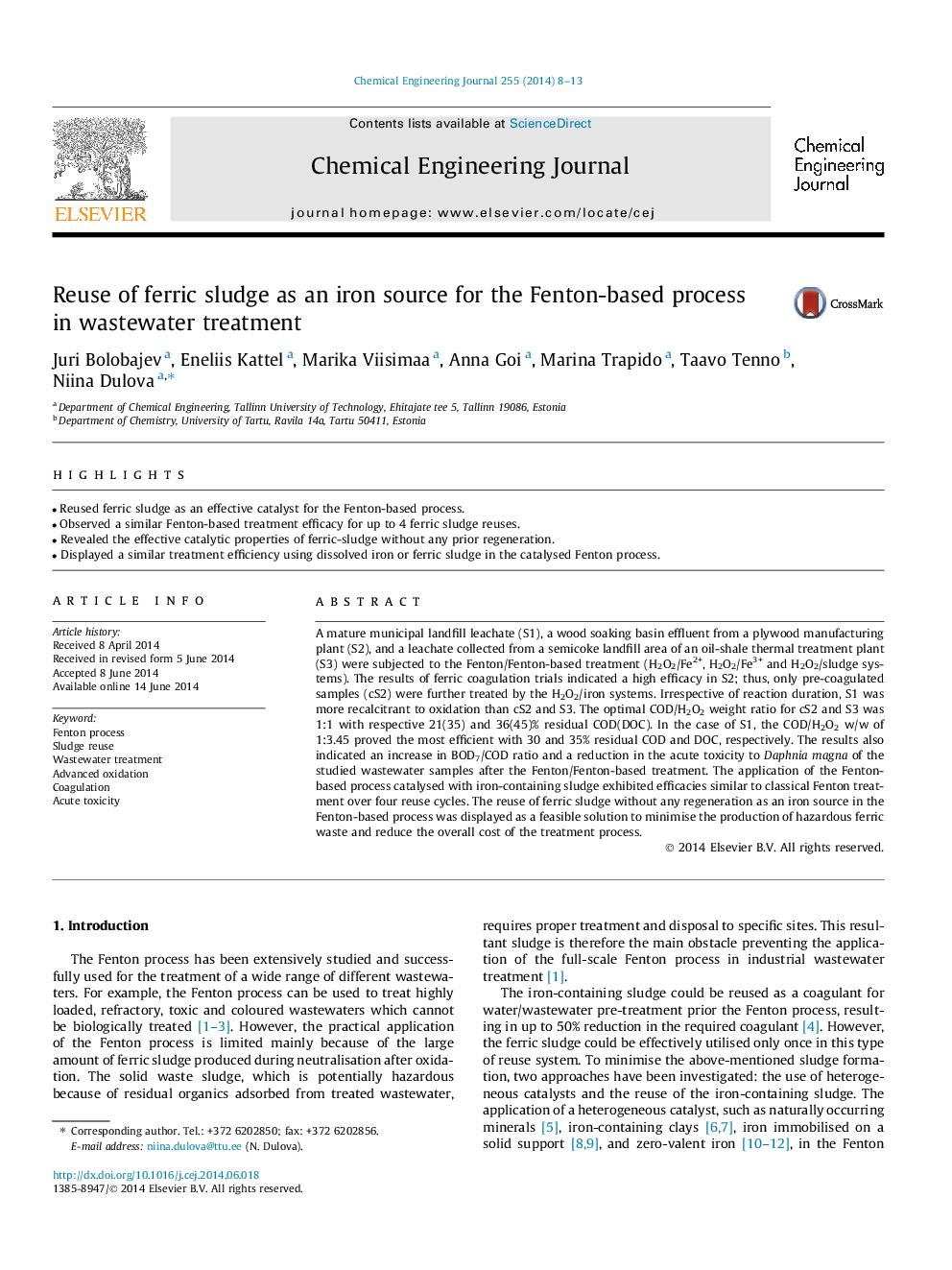| Article ID | Journal | Published Year | Pages | File Type |
|---|---|---|---|---|
| 147041 | Chemical Engineering Journal | 2014 | 6 Pages |
•Reused ferric sludge as an effective catalyst for the Fenton-based process.•Observed a similar Fenton-based treatment efficacy for up to 4 ferric sludge reuses.•Revealed the effective catalytic properties of ferric-sludge without any prior regeneration.•Displayed a similar treatment efficiency using dissolved iron or ferric sludge in the catalysed Fenton process.
A mature municipal landfill leachate (S1), a wood soaking basin effluent from a plywood manufacturing plant (S2), and a leachate collected from a semicoke landfill area of an oil-shale thermal treatment plant (S3) were subjected to the Fenton/Fenton-based treatment (H2O2/Fe2+, H2O2/Fe3+ and H2O2/sludge systems). The results of ferric coagulation trials indicated a high efficacy in S2; thus, only pre-coagulated samples (cS2) were further treated by the H2O2/iron systems. Irrespective of reaction duration, S1 was more recalcitrant to oxidation than cS2 and S3. The optimal COD/H2O2 weight ratio for cS2 and S3 was 1:1 with respective 21(35) and 36(45)% residual COD(DOC). In the case of S1, the COD/H2O2 w/w of 1:3.45 proved the most efficient with 30 and 35% residual COD and DOC, respectively. The results also indicated an increase in BOD7/COD ratio and a reduction in the acute toxicity to Daphnia magna of the studied wastewater samples after the Fenton/Fenton-based treatment. The application of the Fenton-based process catalysed with iron-containing sludge exhibited efficacies similar to classical Fenton treatment over four reuse cycles. The reuse of ferric sludge without any regeneration as an iron source in the Fenton-based process was displayed as a feasible solution to minimise the production of hazardous ferric waste and reduce the overall cost of the treatment process.
